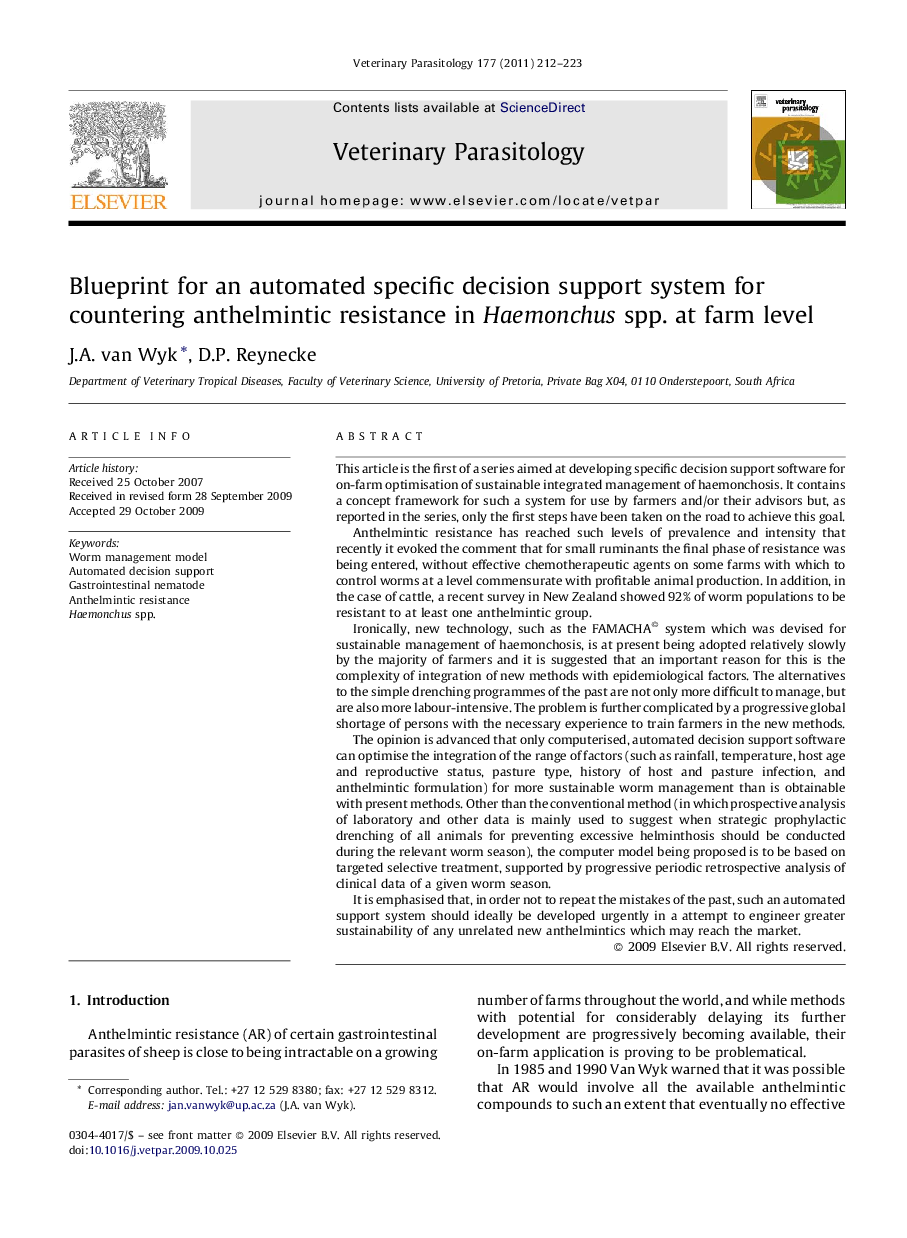| کد مقاله | کد نشریه | سال انتشار | مقاله انگلیسی | نسخه تمام متن |
|---|---|---|---|---|
| 2470417 | 1555727 | 2011 | 12 صفحه PDF | دانلود رایگان |

This article is the first of a series aimed at developing specific decision support software for on-farm optimisation of sustainable integrated management of haemonchosis. It contains a concept framework for such a system for use by farmers and/or their advisors but, as reported in the series, only the first steps have been taken on the road to achieve this goal.Anthelmintic resistance has reached such levels of prevalence and intensity that recently it evoked the comment that for small ruminants the final phase of resistance was being entered, without effective chemotherapeutic agents on some farms with which to control worms at a level commensurate with profitable animal production. In addition, in the case of cattle, a recent survey in New Zealand showed 92% of worm populations to be resistant to at least one anthelmintic group.Ironically, new technology, such as the FAMACHA© system which was devised for sustainable management of haemonchosis, is at present being adopted relatively slowly by the majority of farmers and it is suggested that an important reason for this is the complexity of integration of new methods with epidemiological factors. The alternatives to the simple drenching programmes of the past are not only more difficult to manage, but are also more labour-intensive. The problem is further complicated by a progressive global shortage of persons with the necessary experience to train farmers in the new methods.The opinion is advanced that only computerised, automated decision support software can optimise the integration of the range of factors (such as rainfall, temperature, host age and reproductive status, pasture type, history of host and pasture infection, and anthelmintic formulation) for more sustainable worm management than is obtainable with present methods. Other than the conventional method (in which prospective analysis of laboratory and other data is mainly used to suggest when strategic prophylactic drenching of all animals for preventing excessive helminthosis should be conducted during the relevant worm season), the computer model being proposed is to be based on targeted selective treatment, supported by progressive periodic retrospective analysis of clinical data of a given worm season.It is emphasised that, in order not to repeat the mistakes of the past, such an automated support system should ideally be developed urgently in a attempt to engineer greater sustainability of any unrelated new anthelmintics which may reach the market.
Journal: Veterinary Parasitology - Volume 177, Issues 3–4, 11 May 2011, Pages 212–223